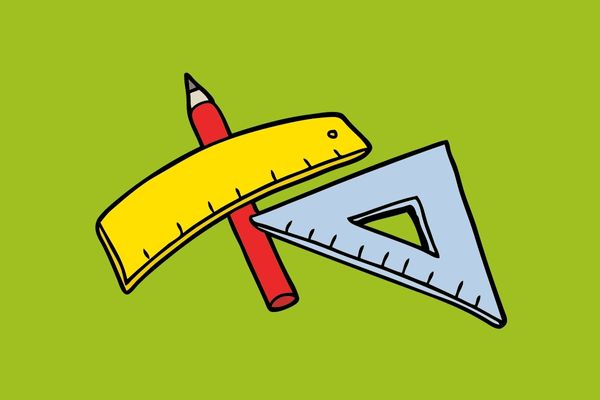Mensuration

Mensuration is a significant component of the Quantitative Aptitude section in the Common Law Admission Test (CLAT). This topic assesses your ability to work with geometric shapes and measurements, calculating areas, volumes and other related quantities. As a student preparing for CLAT, understanding Mensuration is crucial to enhancing your mathematical and logical skills. In this guide, we will explore the core concepts of Mensuration, provide examples for better comprehension and offer strategies to tackle these problems effectively.
Understanding Mensuration Basics
Before delving into solving Mensuration problems, let’s establish the foundational concepts:
1. Area: The space occupied by a two-dimensional figure is known as its area.
2. Perimeter: The sum of all the sides of a two-dimensional figure is its perimeter.
3. Volume: The space occupied by a three-dimensional figure is referred to as its volume.
4. Surface Area: The sum of the areas of all the faces of a three-dimensional figure is its surface area.
Solving Mensuration Problems: Concepts and Examples
Example 1: Finding Area
Question: What is the area of a rectangle with length 8 units and width 5 units?
Solution:
The area of a rectangle is calculated by multiplying its length and width. In this case, the area is 8 units × 5 units = 40 square units.
Example 2: Calculating Perimeter
Question: Find the perimeter of a square with a side length of 12 units.
Solution:
The perimeter of a square is given by the formula P = 4 × side length. Substituting the given value, we get P = 4 × 12 = 48 units.
Example 3: Volume of a Cylinder
Question: Calculate the volume of a cylinder with a radius of 6 units and height of 10 units.
Solution:
The volume of a cylinder is given by the formula V = π × radius^2 × height. Substituting the values, we get V = π × 6^2 × 10 = 360π cubic units.
Strategies for Solving Mensuration Problems
Approaching Mensuration problems requires a combination of understanding formulas and logical thinking. Here are some strategies to effectively solve these problems:
1. Understand Formulas: Familiarise yourself with the formulas for calculating areas, perimeters, volumes and surface areas of different shapes.
2. Label Diagrams: Draw clear and accurate diagrams of the geometric figures to help visualise the problem and identify the given measurements.
3. Units: Pay attention to units of measurement and ensure they are consistent throughout the problem.
4. Practice Visualisation: Practice visualising three-dimensional shapes in two dimensions to help you understand their properties and relationships.
5. Break Down Complex Shapes: Break down complex shapes into simpler ones that you can calculate individually and then combine the results.
Conclusion
Mensuration problems might seem challenging at first, but with a solid grasp of the basic concepts and consistent practice, you can approach them with confidence. Understand the formulas, draw accurate diagrams, pay attention to units, practice visualisation and break down complex shapes. As you prepare for the CLAT, mastering Mensuration not only enhances your quantitative skills but also boosts your overall problem-solving abilities. So, take on the geometric challenges with determination and skill and you’ll find yourself well-prepared for the Mensuration questions in the CLAT.
Calling all law aspirants!
Are you exhausted from constantly searching for study materials and question banks? Worry not!
With over 15,000 students already engaged, you definitely don't want to be left out.
Become a member of the most vibrant law aspirants community out there!
It’s FREE! Hurry!
Join our WhatsApp Groups (Click Here) and Telegram Channel (Click Here) today, and receive instant notifications.




